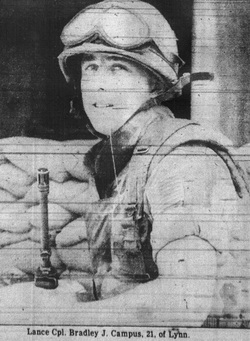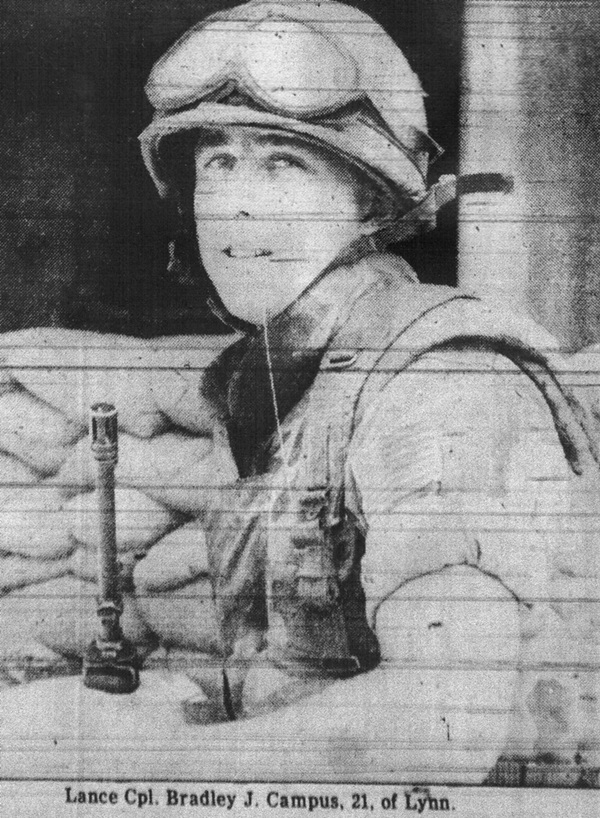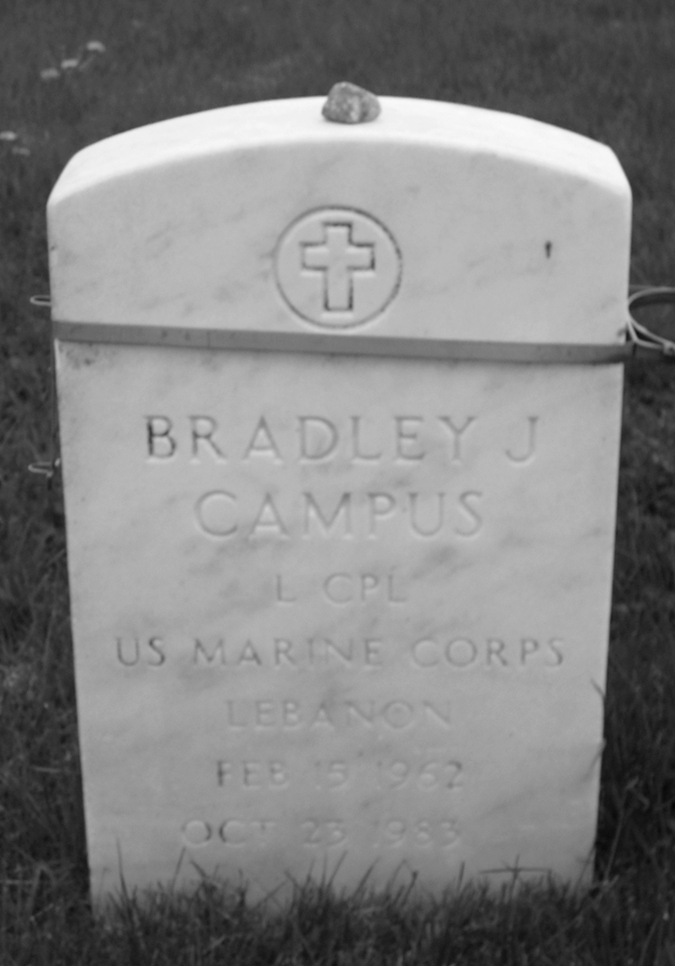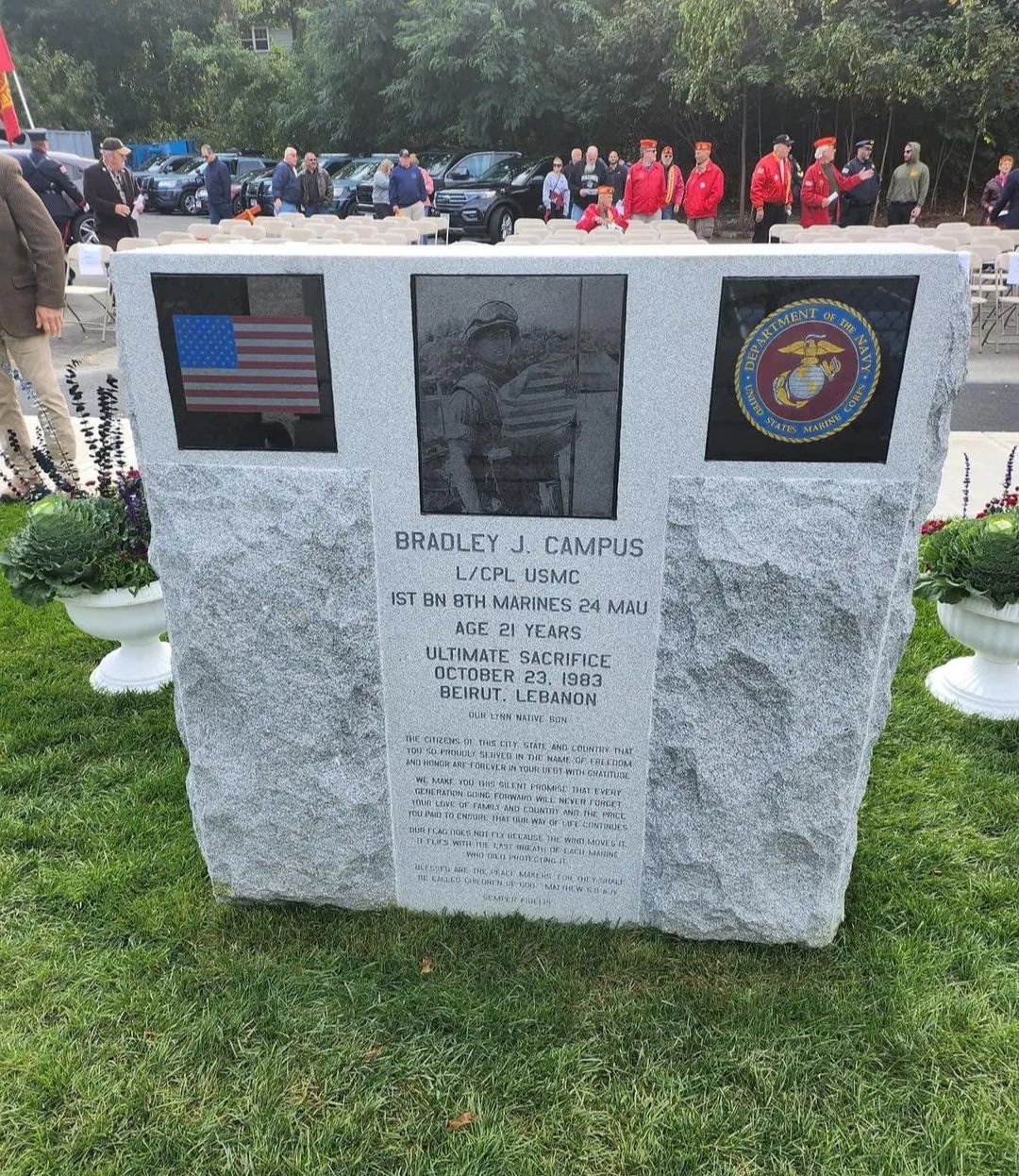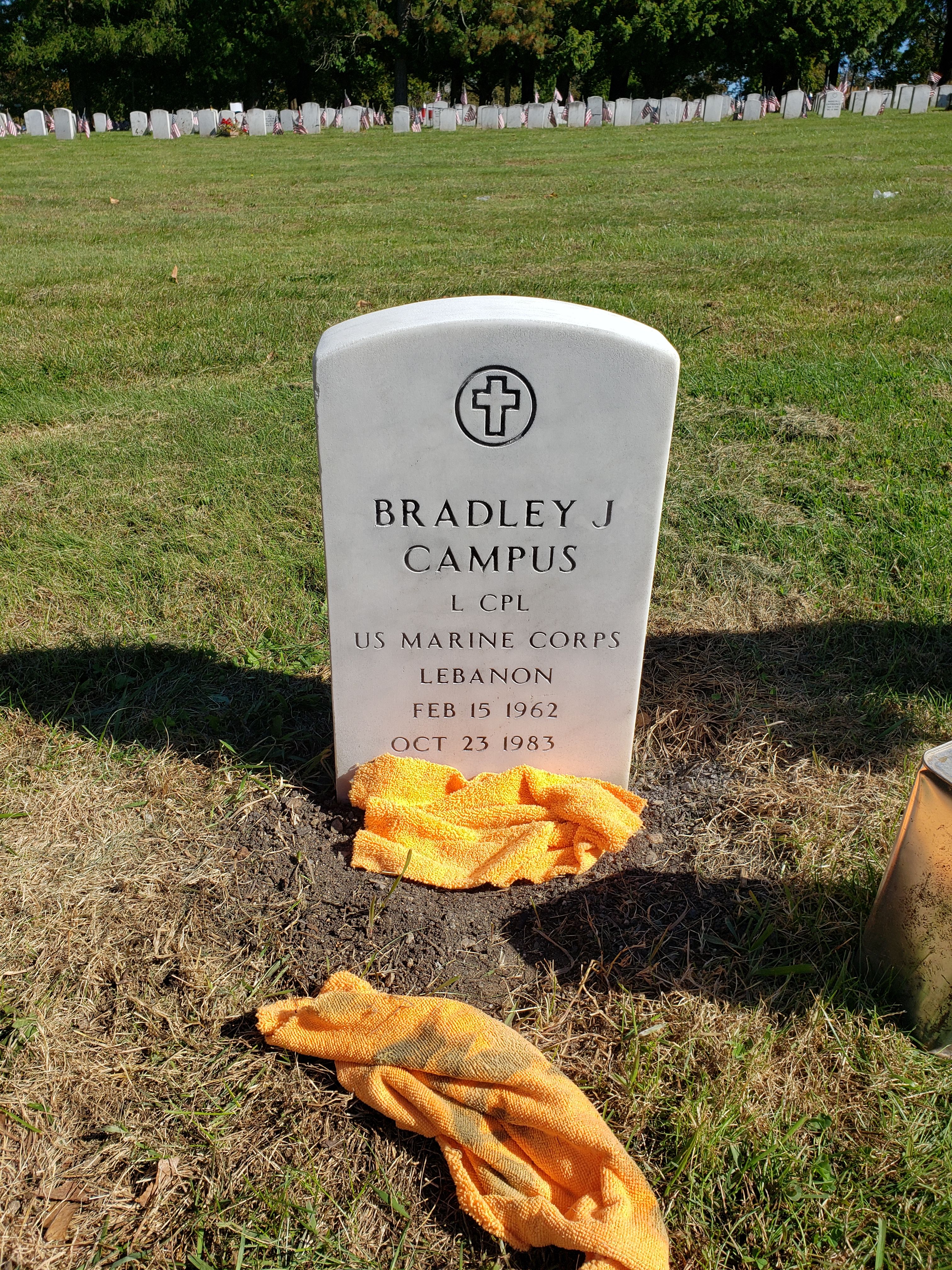At around 6:20 a.m., a yellow Mercedes-Benz truck drove to Beirut International Airport, where the 1st Battalion 8th Marines under the 2nd Marine Division had set up its local headquarters. The truck had been substituted for a hijacked water delivery truck. The truck turned onto an access road leading to the Marines' compound and circled a parking lot. The driver then accelerated and crashed through a barbed wire fence around the parking lot, passed between two sentry posts, crashed through a gate and drove into the lobby of the Marine headquarters. The Marine sentries at the gate were operating under rules of engagement which made it very difficult to respond quickly to the truck. By the time the two sentries had locked, loaded, and shouldered their weapons, the truck was already inside the building's entry way.
The suicide bomber detonated his explosives, which were equivalent to 5,400 kg (12,000 pounds) of TNT. The force of the explosion collapsed the four-story cinder-block building into rubble, crushing many inside.
The force of the explosion initially lifted the entire four-story structure, shearing the bases of the concrete support columns, each measuring fifteen feet in circumference and reinforced by numerous one-and-three-quarter-inch steel rods. The airborne building then fell in upon itself. A massive shock wave and ball of flaming gas was hurled in all directions.
Rescue efforts continued for days. While the rescuers were at times hindered by sniper fire, some survivors were pulled from the rubble and airlifted to the USS Iwo Jima, located offshore, and/or to the hospital at RAF Akrotiri in Cyprus or to U.S. and German hospitals in West Germany. An 18 year-old local female was killed after firing several shots at a rescue team nearby.
In the attack on the American barracks, the death toll was 241 American servicemen: 220 Marines, 18 Navy personnel and three Army soldiers. Sixty Americans were injured. In the attack on the French barracks, 58 paratroopers were killed and 15 injured, in the single worst military loss for France since the end of the Algerian War. In addition, the elderly Lebanese custodian of the Marines' building was killed in the first blast. The wife and four children of a Lebanese janitor at the French building were also killed.
This was the deadliest single-day death toll for the United States Marine Corps since the Battle of Iwo Jima of World War II (2,500 in one day) and the deadliest single-day death toll for the United States military since the 243 killed on January 31, 1968, the first day of the Tet Offensive during the Vietnam War. The attack remains the deadliest single attack on Americans overseas since World War II.
At around 6:20 a.m., a yellow Mercedes-Benz truck drove to Beirut International Airport, where the 1st Battalion 8th Marines under the 2nd Marine Division had set up its local headquarters. The truck had been substituted for a hijacked water delivery truck. The truck turned onto an access road leading to the Marines' compound and circled a parking lot. The driver then accelerated and crashed through a barbed wire fence around the parking lot, passed between two sentry posts, crashed through a gate and drove into the lobby of the Marine headquarters. The Marine sentries at the gate were operating under rules of engagement which made it very difficult to respond quickly to the truck. By the time the two sentries had locked, loaded, and shouldered their weapons, the truck was already inside the building's entry way.
The suicide bomber detonated his explosives, which were equivalent to 5,400 kg (12,000 pounds) of TNT. The force of the explosion collapsed the four-story cinder-block building into rubble, crushing many inside.
The force of the explosion initially lifted the entire four-story structure, shearing the bases of the concrete support columns, each measuring fifteen feet in circumference and reinforced by numerous one-and-three-quarter-inch steel rods. The airborne building then fell in upon itself. A massive shock wave and ball of flaming gas was hurled in all directions.
Rescue efforts continued for days. While the rescuers were at times hindered by sniper fire, some survivors were pulled from the rubble and airlifted to the USS Iwo Jima, located offshore, and/or to the hospital at RAF Akrotiri in Cyprus or to U.S. and German hospitals in West Germany. An 18 year-old local female was killed after firing several shots at a rescue team nearby.
In the attack on the American barracks, the death toll was 241 American servicemen: 220 Marines, 18 Navy personnel and three Army soldiers. Sixty Americans were injured. In the attack on the French barracks, 58 paratroopers were killed and 15 injured, in the single worst military loss for France since the end of the Algerian War. In addition, the elderly Lebanese custodian of the Marines' building was killed in the first blast. The wife and four children of a Lebanese janitor at the French building were also killed.
This was the deadliest single-day death toll for the United States Marine Corps since the Battle of Iwo Jima of World War II (2,500 in one day) and the deadliest single-day death toll for the United States military since the 243 killed on January 31, 1968, the first day of the Tet Offensive during the Vietnam War. The attack remains the deadliest single attack on Americans overseas since World War II.
Bio by: John
Gravesite Details
United States Marine Corps. Killed in the terrorist bombing of the United States Marine barracks in Beirut Lebanon on October 23, 1983
Sponsored by Ancestry
Advertisement
Explore more
Sponsored by Ancestry
Advertisement
